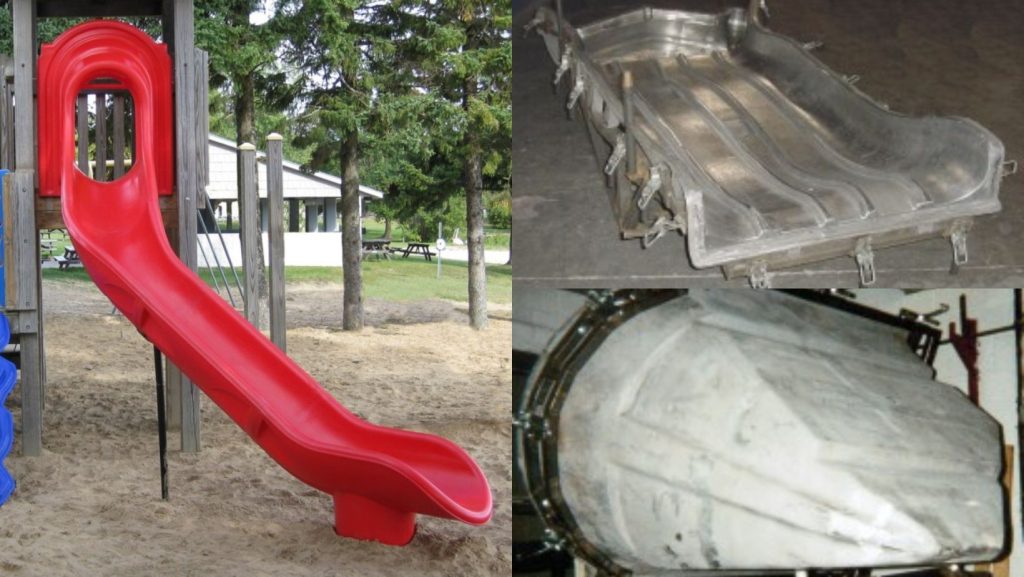
Custom plastic parts have become essential in industries like manufacturing, agriculture, and recreation. They provide durable, lightweight solutions to meet various technical and operational demands. One process leading this revolution is rotational molding, or rotomolding, a cost-effective, customizable, and sustainable method for creating robust plastic components.
But how does an initial idea evolve into a functional, rotomolded product? This blog walks you through the step-by-step process of working with SPI Plastics to transform your concept into reality. By the end, you’ll know exactly how our expertise in rotomolding can save you time, reduce costs, and deliver high-quality products tailored to your needs.
What Is Rotational Molding and Why Choose It?
Rotational molding, often referred to as “rotomolding,” is a manufacturing method used to create hollow, seamless plastic components. The process involves placing powdered plastic material into a heated mold. The mold is then rotated on two axes, ensuring the material coats the interior surface evenly. The result? A durable, high-quality product with exceptional structural integrity.
Key Benefits of Rotational Molding
Cost-Effective Production
Whether you’re producing 10 units or 10,000, rotomolding is an affordable option. It’s particularly useful for small to midsize production runs.
Unmatched Customization
From textured finishes and molded-in graphics to complex shapes and features like threaded inserts, rotomolding allows for tremendous design flexibility.
Material Efficiency
This process creates minimal waste and works with a range of materials, such as polyethylene and PVC, making it an eco-conscious choice.
Industries like transportation, construction, and healthcare all rely on rotomolding to create durable and functional plastic parts. Here’s how you can transform your concept into a finished product.
Step 1: Preliminary Product Concept and Collaboration
Every successful product starts with an idea. It might stem from a problem you’re trying to solve or an improvement you’d like to make on an existing product. Once you have this concept, SPI Plastics takes the reins.
Our team collaborates closely with you to understand your vision, functionality requirements, and any design preferences. We believe in partnerships, not just transactions. From brainstorming solutions to discussing possible designs, SPI ensures the foundation of your project is solid and strategically planned.
Step 2: Advanced Product Design with CAD Technology
The next step is turning your idea into a viable design. SPI Plastics uses Computer-Aided Design (CAD) to create highly detailed 3D models of your custom plastic part.
Benefits of CAD in Rotational Molding Design
- Real-Time Customization: Modify the size, shape, and texture with ease.
- Flaw Detection: Identify and address design flaws early to save time and money.
- Alignment & Accuracy: 3D renderings ensure all project stakeholders are on the same page.
SPI’s seasoned designers bring a wealth of expertise and innovation to this phase, ensuring your product is both functional and visually appealing.
Step 3: Tooling and Prototyping
Tooling is the backbone of any rotational molding process. It involves creating molds specific to your product design. The quality of these molds significantly impacts the final product.
Common Tooling Options at SPI Plastics
- CNC-Machined Aluminum Molds: Precision and durability for complex projects.
- Cast Aluminum Molds: Ideal for prototypes and small production runs.
- Textured Surfaces and Molded-In Inserts: Custom finishes and functionality features.
To ensure the best results, SPI creates prototypes to refine the design and test functionality before approving production molds. Prototyping reduces risk and guarantees you’ll achieve the desired result.
Step 4: The Rotational Molding Process
With your mold complete, the production process begins. This three-step method creates sturdy and customizable parts.
- Material Loading: Powders like polyethylene evenly fill the mold.
- Heating and Rotating: The mold is heated and rotated along two axes, spreading the material evenly.
- Cooling and Finalizing: The mold cools, solidifying the plastic into its final form.
At this stage, features like textured finishes, molded-in graphics, or reinforcement structures can also be integrated. Whether you’re crafting a recreational slide or an industrial tank, this process ensures consistent quality.
Step 5: Secondary Processes for Customization
Customization doesn’t stop after the molding phase. SPI Plastics offers secondary processes to further enhance your product’s functionality and appearance.
Available Secondary Processes
- Assembly
- Barcoding availability
- CNC Machining
- Custom Packaging
- Drilling
- Flame Polishing
- Just-in-Time Delivery System
- Mold Maintenance
- Molded-in Graphics
- Molded-in Threaded Inserts
- Polyurethane Foam Insulation
- Welding
Step 6: Quality Assurance and Final Delivery
At SPI Plastics, we commit to excellence at every stage of the process. Each product undergoes rigorous quality assurance (QA) to ensure it meets your requirements for durability, fit, and finish.
Once your product passes inspection, it’s packaged and shipped with the utmost care. We even offer custom packaging and just-in-time delivery systems to meet your unique business needs.
Partner With SPI Plastics to Bring Your Concept to Life
The process of turning an idea into a durable, high-quality product doesn’t have to be complicated. SPI Plastics specializes in guiding businesses through rotational molding projects with precision and care. From concept to delivery, we ensure that every step aligns with your vision and goals.
Have an idea for custom plastic parts? Contact SPI Plastics today to learn more about our services, or to start your next project!